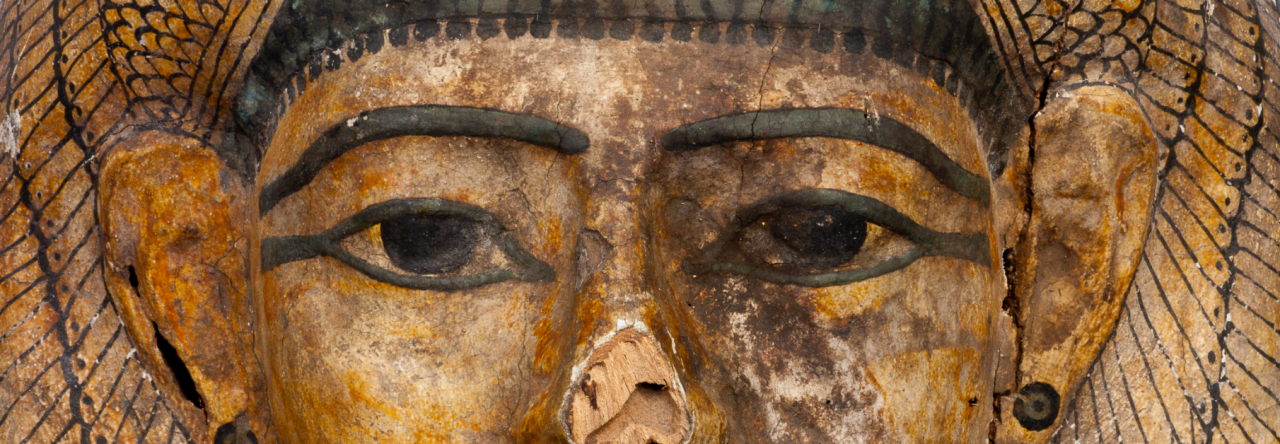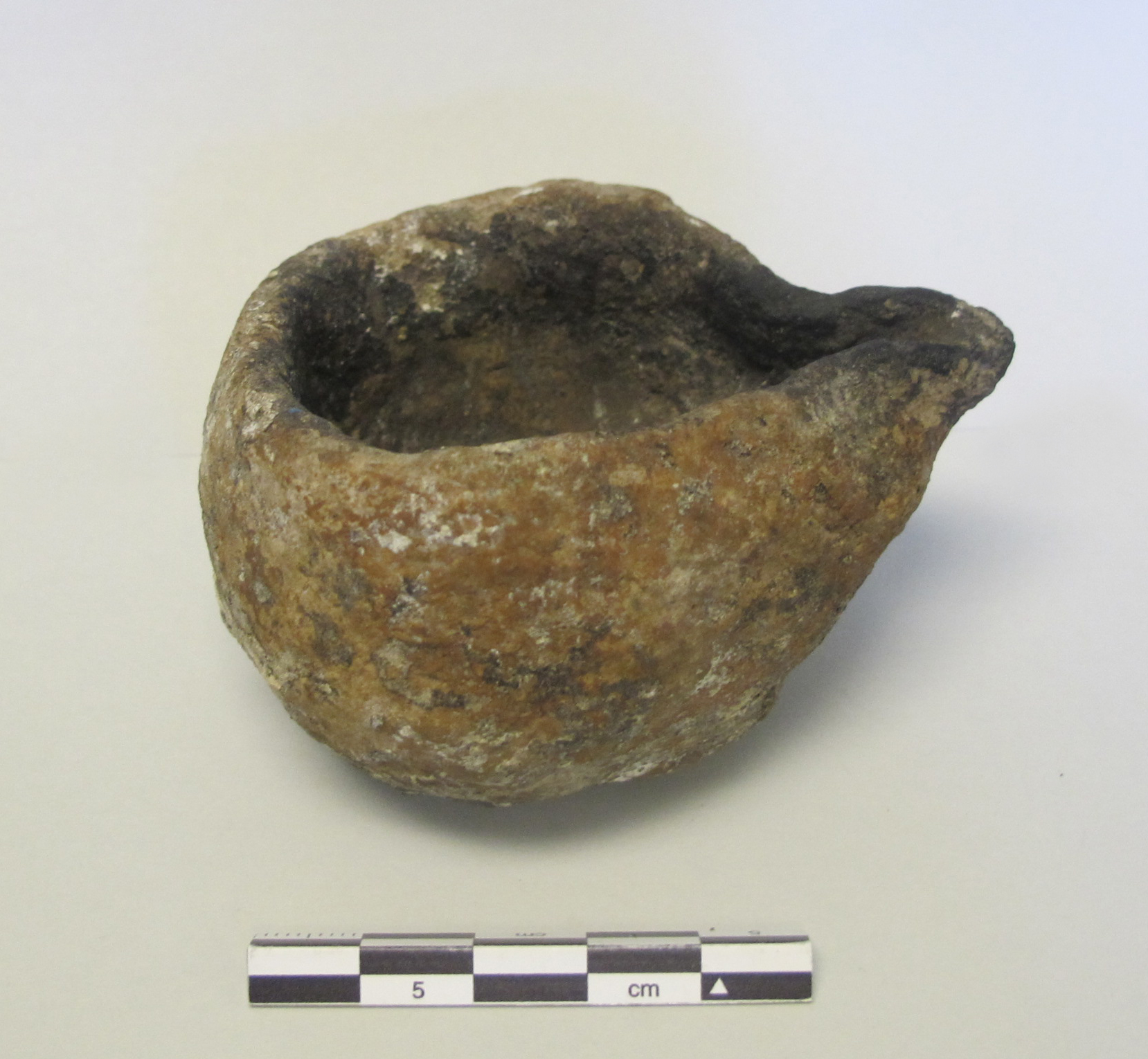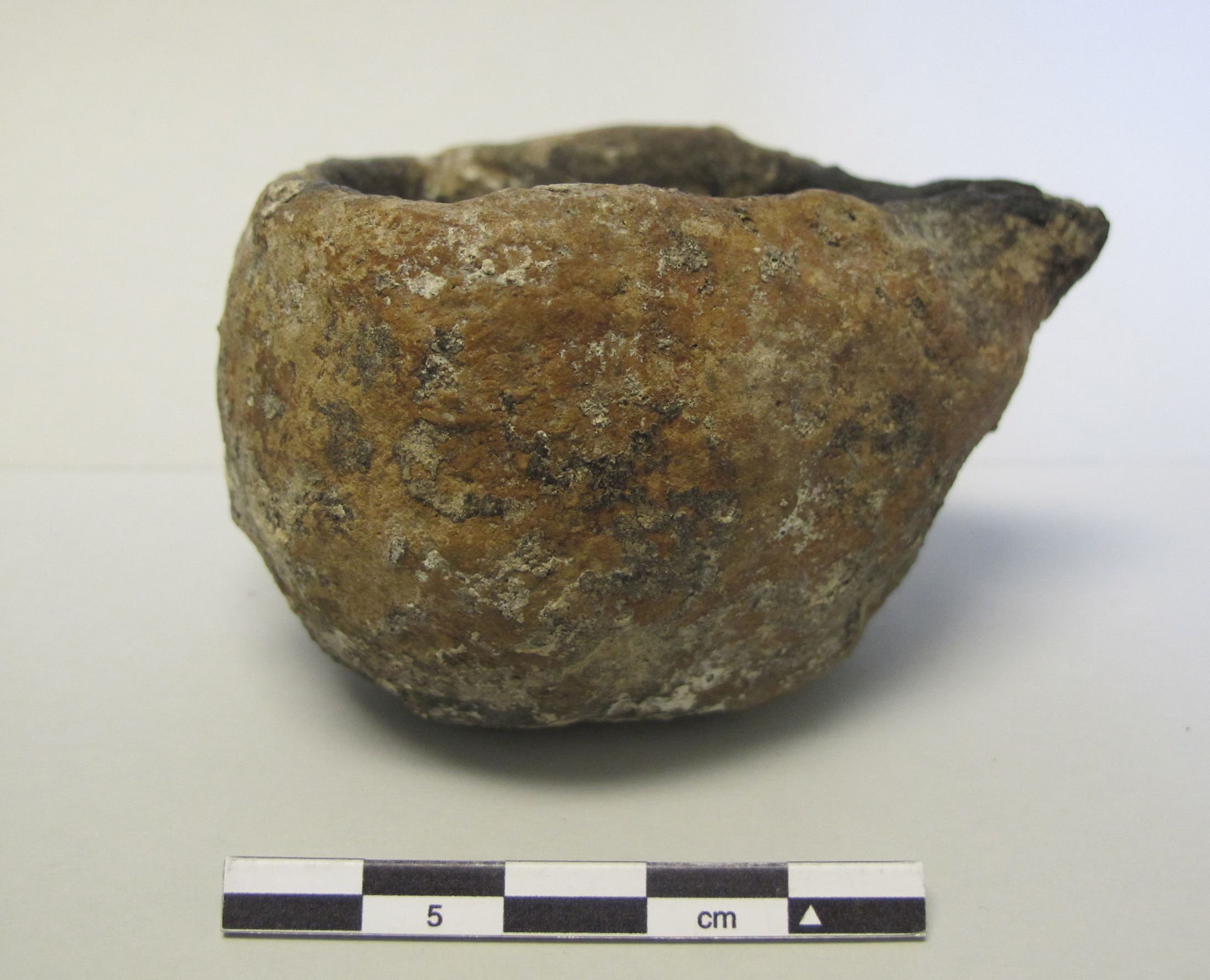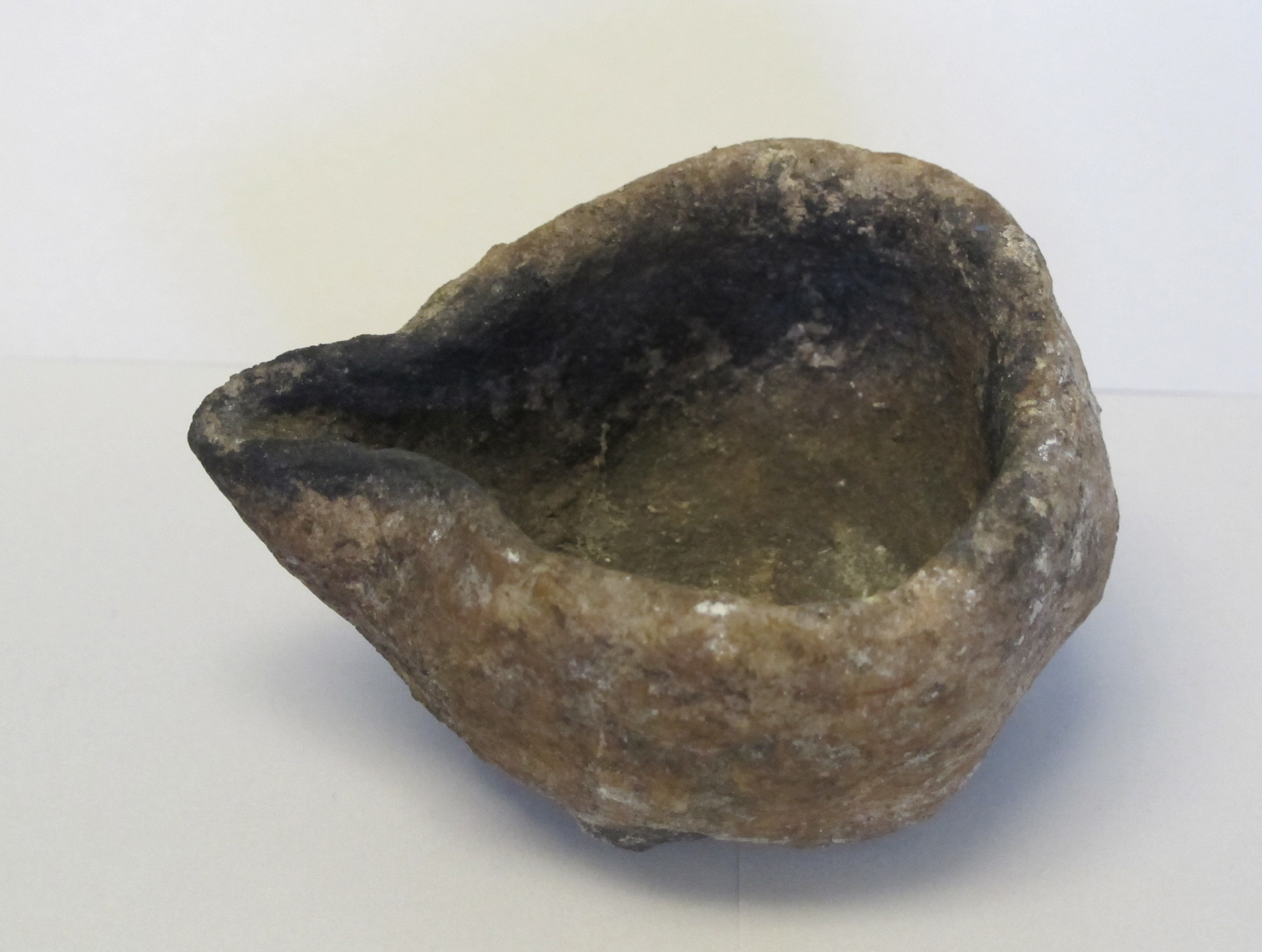For a 3D model made by the Virtual Curation Lab at Virginia Commonwealth University, see https://skfb.ly/owuDO
AWG0000.01.17 (R6029)
Unknown (Roman?)
Material: Clay
Technique: Handbuilt, “pinch-pot” style
Weight: 106g
Dimensions: 7.5cm long, 4.5cm high, max. width 6cm
Provenance: Unknown
Source/donor: Richmond College Museum
Date of acquisition: The old inventory number suggests that it was part of the Richmond College Museum collection. Other R-numbered items were displayed in the Biology Museum in Maryland Hall beginning in 1932.
Research by: Paige Walworth (Maggie Walker Governor’s School, ’22), Amy Nicholas, ’11
Detailed description of form/shape:
This lamp, the most primitive in the collection, is made from a coarse, dark fabric. The body is a bowl-like shape, allowing for open burning, and is somewhat flattened at the bottom. The edge of the bowl is pinched to form a small nozzle, and there is evidence of much burning from the dark residue on the bowl and on the rims of the lamp. It is obvious that this lamp is handmade due to its irregular shape and simple body with no decoration.
Comparanda:
Similar pinched nozzles with traces of burning are found on lamps from ancient Persia, such as Louvre inv. no. MAO S 809. AS 14179 and Louvre inv. no. AS 3982. The latter is also comparable in its rough, irregular form. Closer to our lamp in both fabric and shape (darker coarse clay and taller) is a Hellenistic lamp from western Anatolia, Louvre inv. no. S 5173.
Discussion:
The earliest clay lamps were simple in construction, typically consisting of a shallow dish or bowl in which a wick was floated in oil. Often there was a hand-folded slot in which the wick could rest. Open lamps continued to be made even after closed forms, like the other lamps in our collection, began to be used. Since irregular handmade lamps are found in many different time periods and cultures, it is difficult to determine exactly when and where this lamp was made.
Bibliography:
Wesleyan University Archaeology and Anthropology Collections. “Ancient Oil Lamps.” Wesleyan University. https://www.wesleyan.edu/libr/collections/arch-anth/highlights/ancient_oil_lamps.html.



